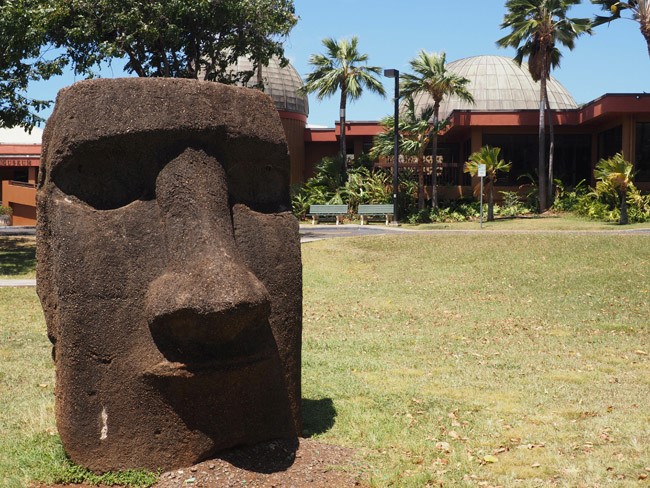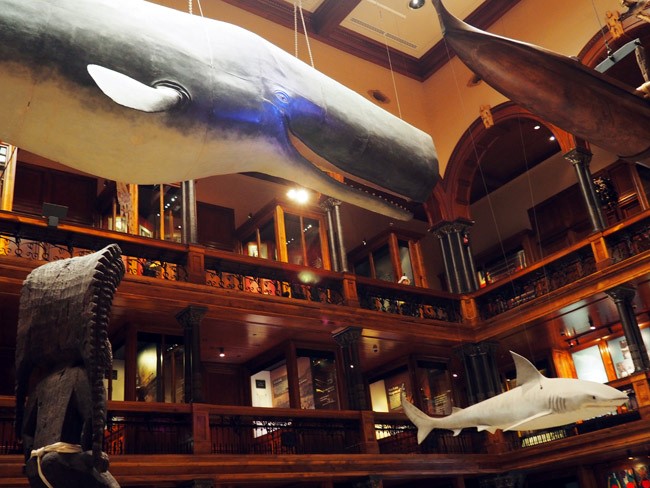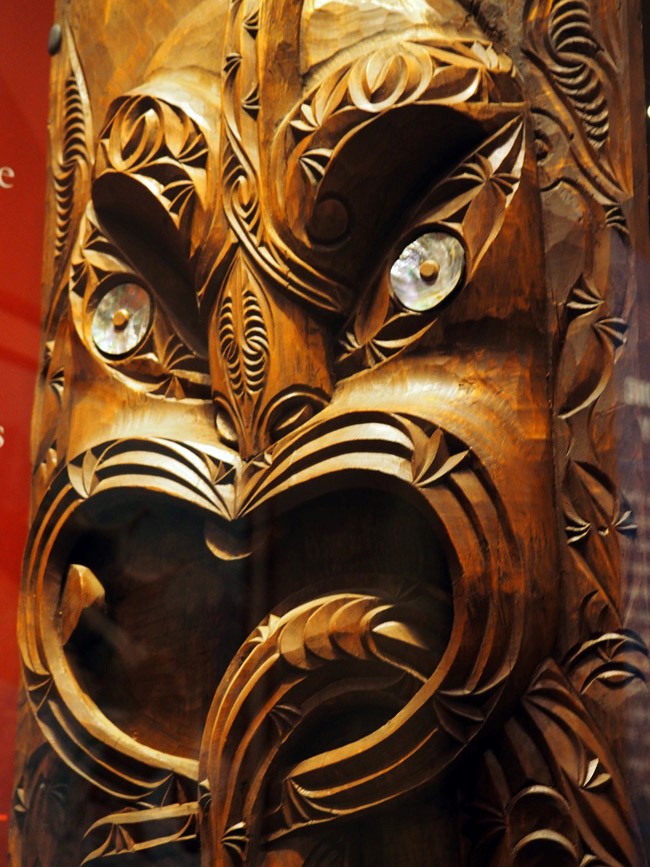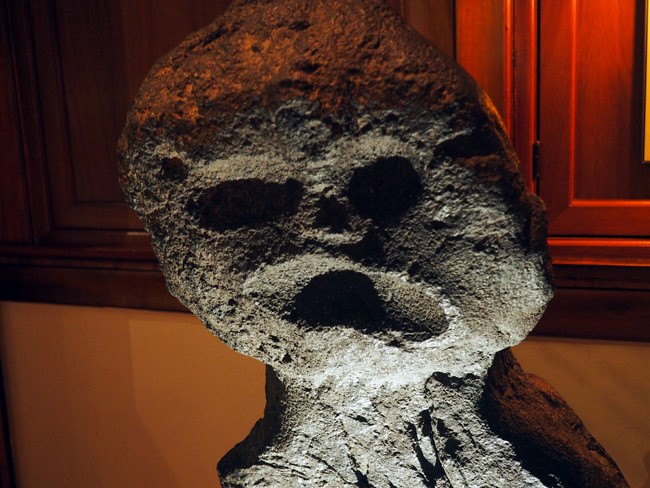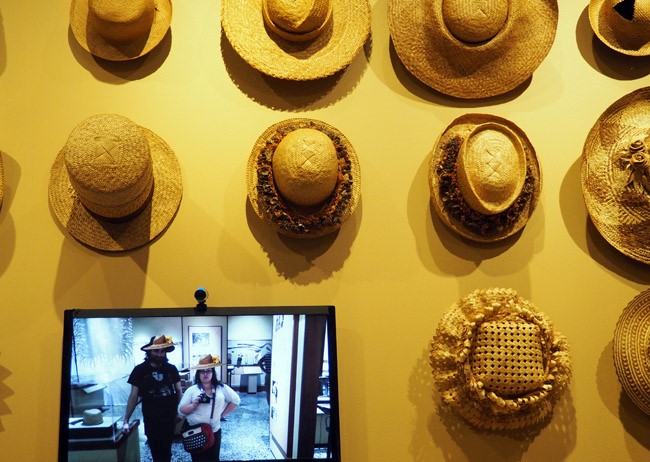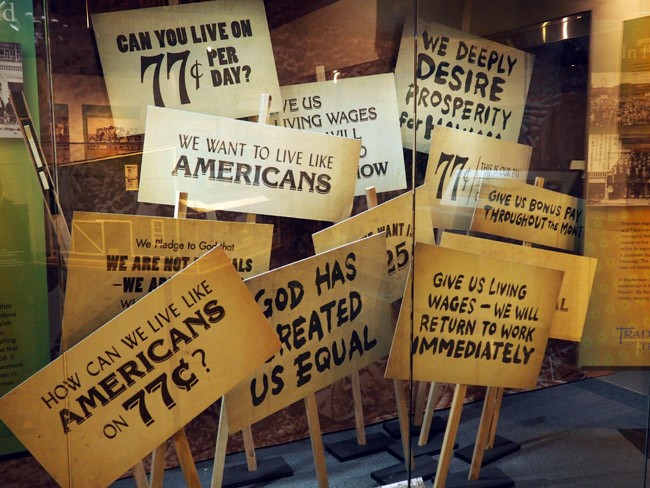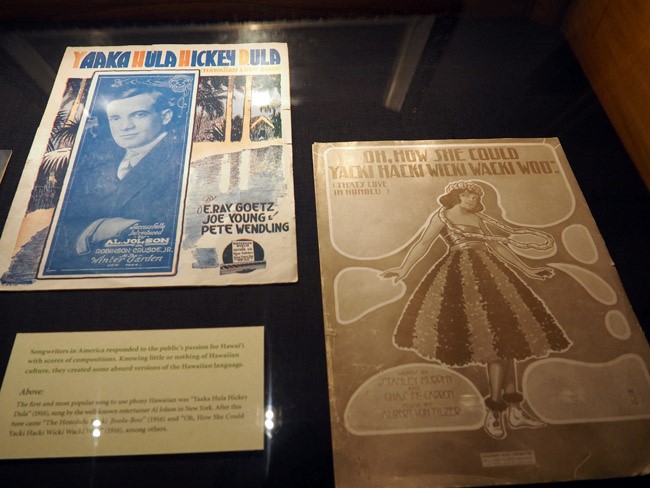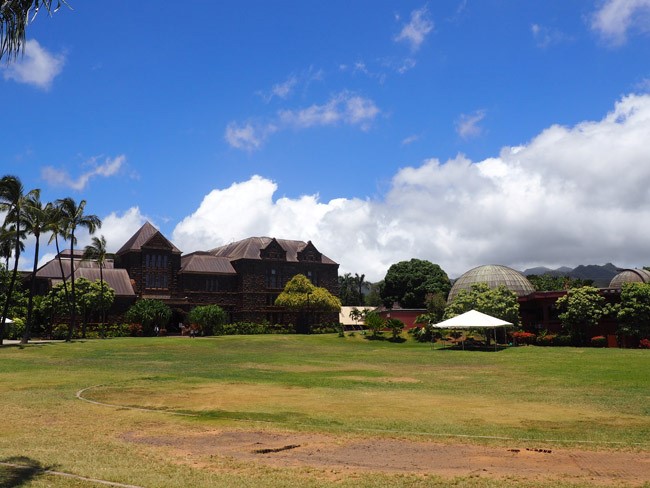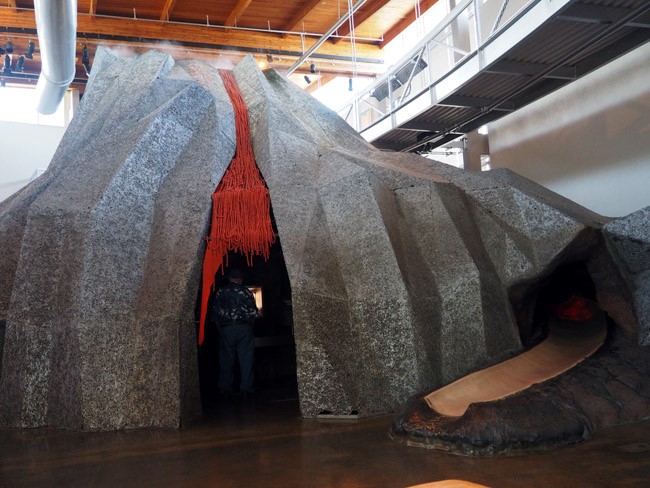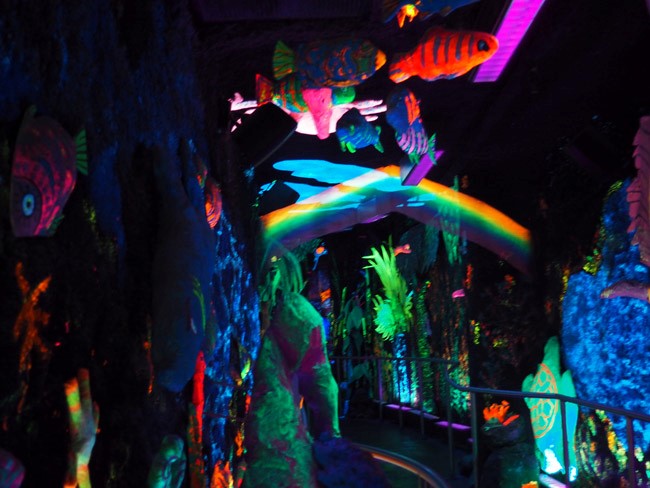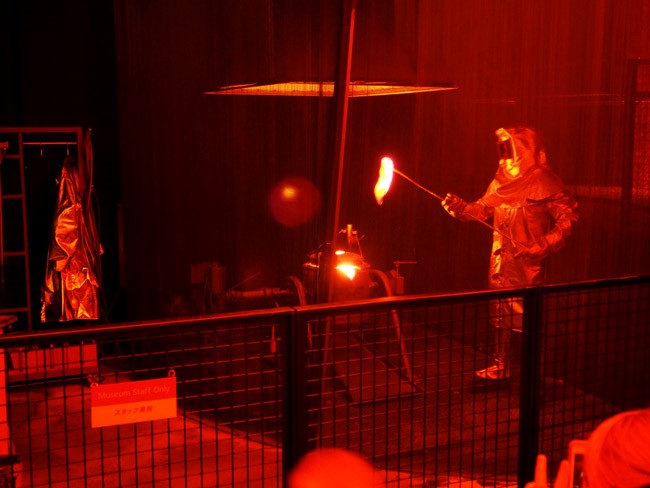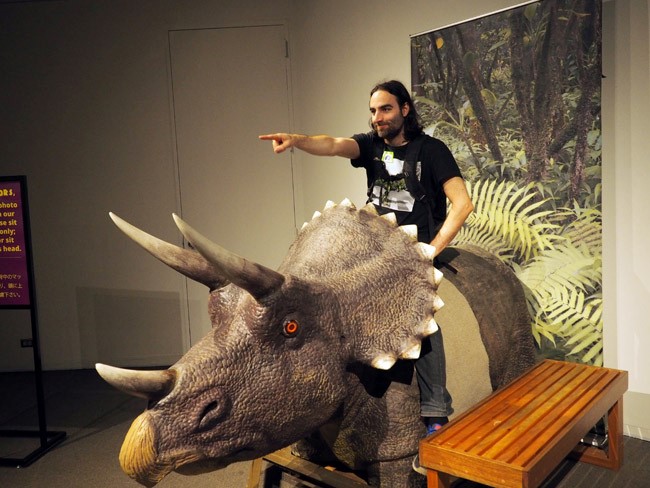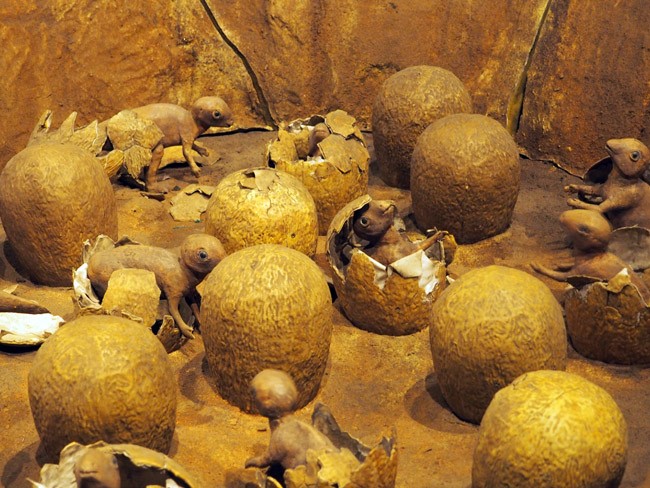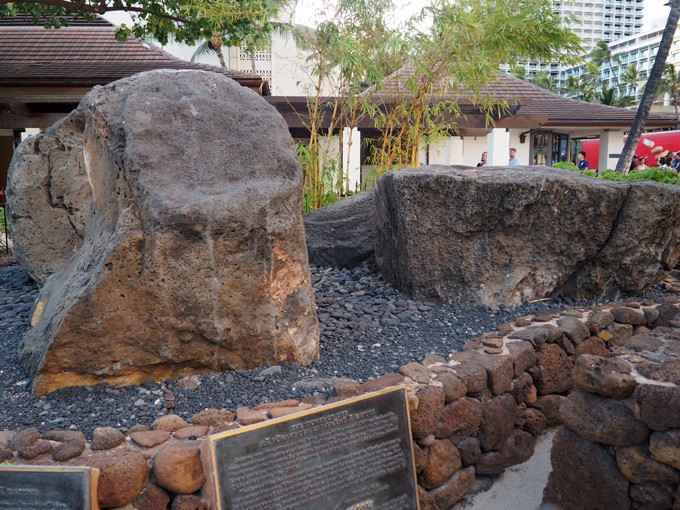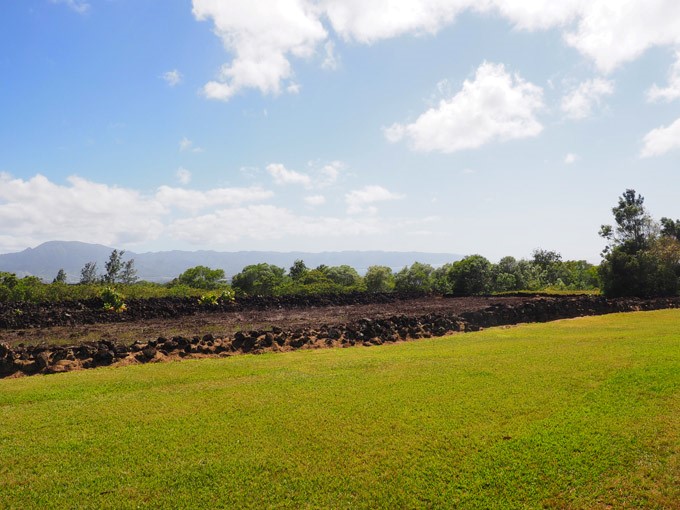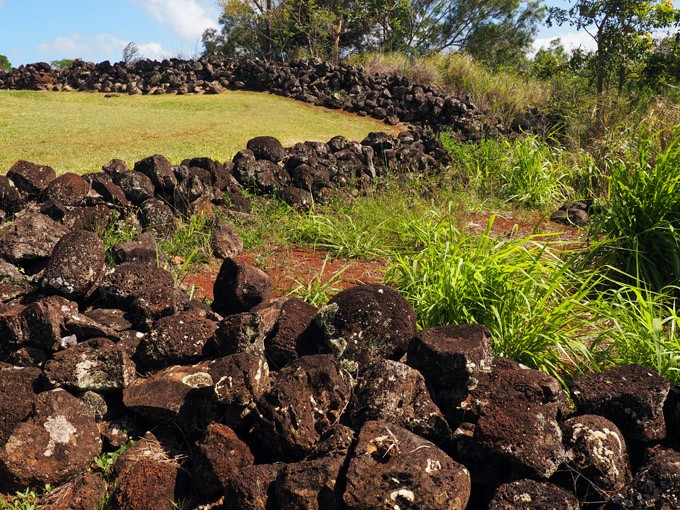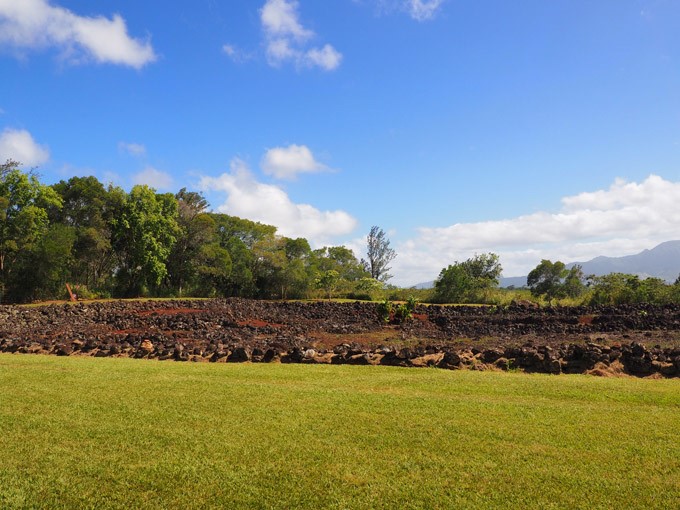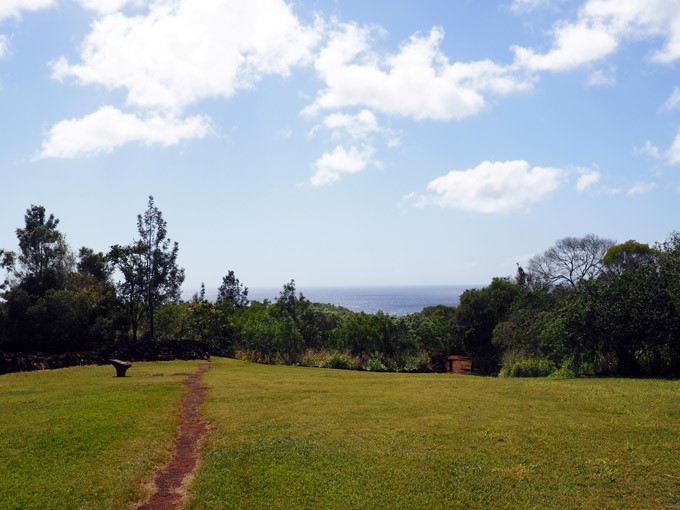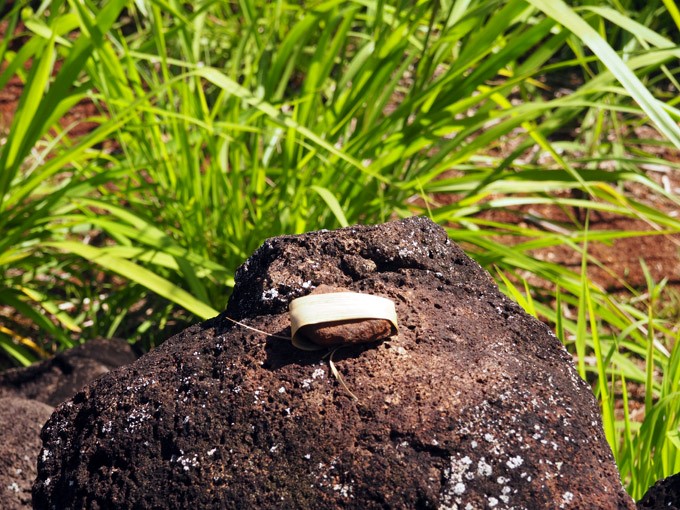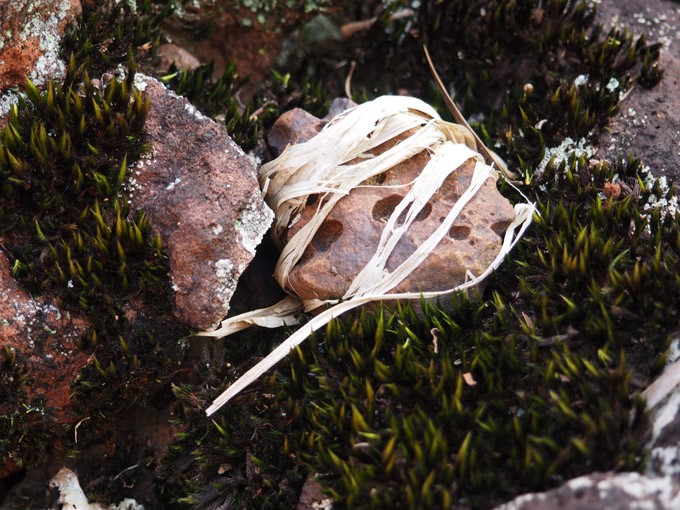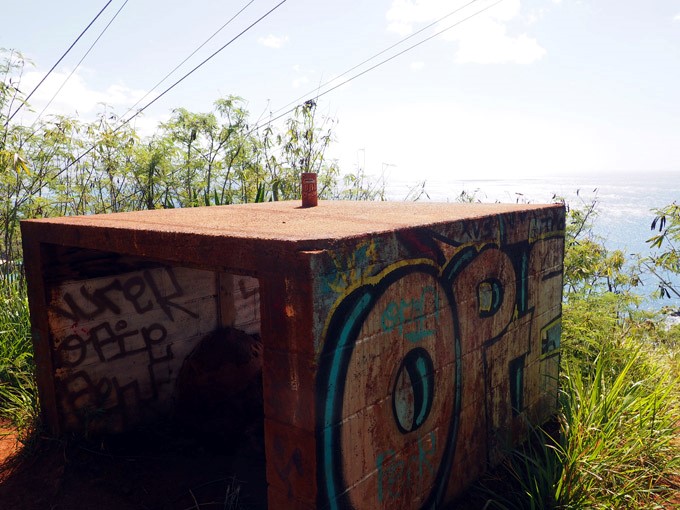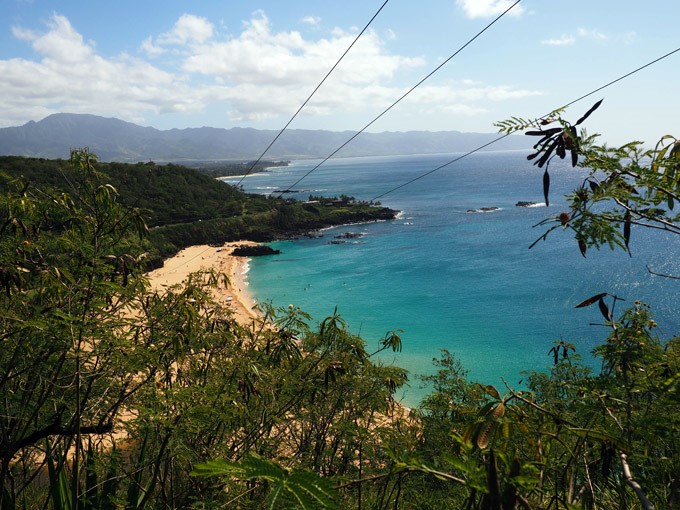If you’re looking to learn about Hawaiian history and culture, the Bishop Museum may well be your jam. It absolutely was mine, and was in fact one of the most interesting and educational museums I’ve ever had the pleasure to visit. The Bishop Museum contains the largest number of Polynesian artifacts in the world, from royal kahili (feather standards) and royal feather cloaks that are woven so tightly they appear to be made of cloth, to ceremonial artifacts and deity statues. Each section was beautifully displayed and evocatively described; you can appreciate the artifacts on their own, but the placards gave you the opportunity to dig deeper and learn more.
Look at all that luxe koa wood: those display cases are actually worth more than the original museum buildings! The Hawaiian hall covers everything from the gods of pre-contact Hawaii to Hawaiian daily life to Hawaiian history. There are a number of stations where you can learn Hawaiian storytelling, play with kala’au sticks, and more. Adjacent is the Pacific Hall, which teaches you about the distinct but connected cultures of Polynesia. They even had a small section on the aboriginal Taiwanese, which surprised me for some reason. Maybe because I didn’t learn much about the aboriginal culture when I was actually in Taiwan.
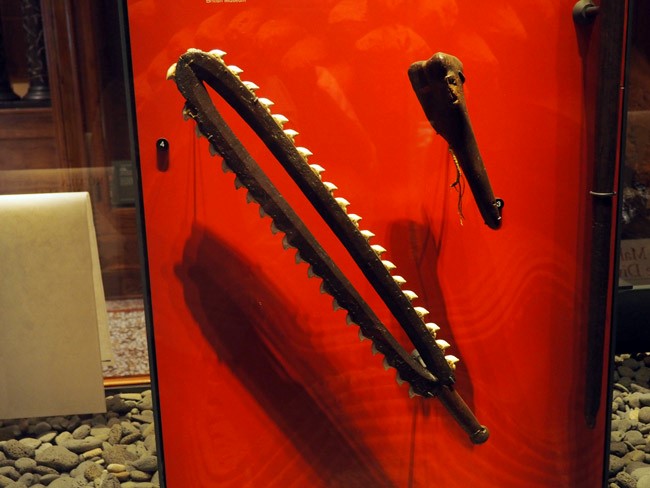
The placard underneath this tiger shark tooth weapon said that it was used to kill tiger sharks, which is the most metal thing I’ve ever heard.
The placard with this statue of a shark deity said that its burial location was discovered in a dream where it had begged to be found, and they had to cement it into place in its current location, because despite their efforts to relocate it outside the Hawaiian Hall, it refused to be moved. Now look at its eyes again. Following you around? They haunted me that entire room.
There was an entire room dedicated to the craftsmanship of grass hats, and when you neared this camera, the monitor would plop a hat on your head. Fabulous, no?
The Bishop Museum was very tasteful in their labeling of sheet music about America’s newfound interest in Hawaii, merely saying that the songwriters “created some absurd versions of the Hawaiian language.” My label would have been “Goddamn it, white people.”
We moseyed over to the science hall to make sure we arrived in plenty of time for the lava pouring demonstration, the only place you can see melted lava in person on Oahu. Inside the science hall, they’ve got a wee volcano that wafts smoke from its top, and a sad slide that not even children can work up a good speed on, so it was extra sad when I tried it. I looked like a dog scooting his ass on the carpet, dragging myself down the slide with my feet. Echoes of the Kennedy Space Center and the ramp slide I made when they wouldn’t let me slide down their actual slide, except people were openly laughing at me this time.
To get to their hot shop under the volcano, you need to take a trip down the rainbow road, aka Stoner’s Paradise:
We were right on time, and the demonstrator taught us all about the different kinds of volcanic glass and passed around samples for us to touch and inspect. He also passed around a chunk of what will eventually be the new island in the Hawaiian chain, Lo’ihi, some 10,000-100,000 years from now, which means neither you nor I will vacation there in our lifetimes, barring vampiric immortality or robot bodies, neither of which would probably appreciate the salty sea air and blazing sun.
Then on to the good stuff: the lava pour. To get it into its liquid state, it has to be heated to over 1292°F, which is so hot that I’m assuming you can toast a marshmallow from 100 yards. No one has really invested in the marshmallow toasting sciences enough to tell me for certain. The lava solidified rapidly, and even though it was still incredibly hot, it could be picked up and manipulated. At that level of heat, even in a protective suit the demonstrator couldn’t be near it for long, and he was out of the containment area before it cooled down enough to look like the rippled lava we more readily recognize.
They also had dinosaurs. Poseable ones, rideable ones, and so many animatronic ones, and you know I’ll always take a hot second to gawk at some animatronic dinosaurs or maybe feed one an onion ring.
The Bishop Museum was completely amazing, and even though every fiber of your body urges you to be outside every moment while you’re visiting Oahu, if you have any interest in Polynesian history or culture, I wholeheartedly recommend you carve out some time to visit.

